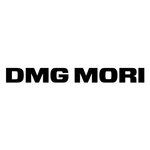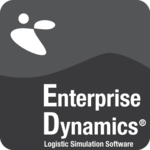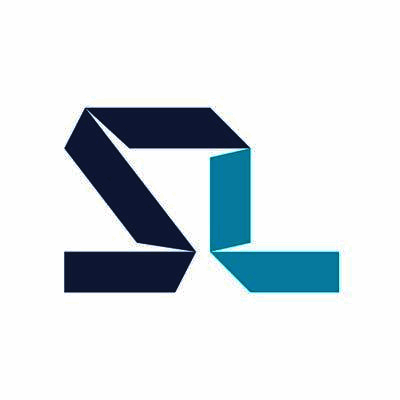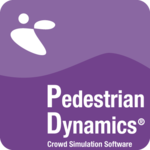Description

DMG MORI Virtual Machine

Enterprise Dynamics
Comprehensive Overview: DMG MORI Virtual Machine vs Enterprise Dynamics
DMG MORI Virtual Machine and Enterprise Dynamics are both software products designed to augment manufacturing and production processes, but they serve slightly different purposes and address distinct aspects of manufacturing and logistics.
a) Primary Functions and Target Markets
-
DMG MORI Virtual Machine:
- Primary Functions: The DMG MORI Virtual Machine serves as a digital twin for CNC machines. It is primarily used for simulation, optimization, and verification of machining processes in a virtual environment before actual production begins. This involves simulating the machining of parts, validating CNC programs, collision detection, and optimizing tool paths to enhance efficiency and reduce the risk of errors.
- Target Markets: The target market for the Virtual Machine primarily includes industries that rely heavily on CNC machining. This covers aerospace, automotive, medical device manufacturing, and other precision engineering sectors where high-quality machining and precision are critical.
-
Enterprise Dynamics:
- Primary Functions: Enterprise Dynamics focuses on simulation software for logistics and manufacturing systems. It is designed to model, simulate, visualize, and analyze complex processes in factories, warehouses, distribution centers, and supply chains. Enterprises use it to test different scenarios, improve system performance, and optimize resource allocation and workflow processes.
- Target Markets: The target market is broad, encompassing manufacturing companies, logistics firms, supply chain managers, and any enterprise that requires detailed simulation of operations to improve efficiency and reduce costs.
b) Market Share and User Base
Comparing market share and user base between these two products generally involves different metrics due to their distinct application areas:
-
DMG MORI Virtual Machine: Being a product of DMG MORI, a leading manufacturer in machine tools, it enjoys significant utilization within sectors that already use DMG MORI's physical machine tools. This naturally embeds it into DMG MORI's customer base, which spans globally across high-tech manufacturing environments.
-
Enterprise Dynamics: This product competes in a broader simulation software market that includes several established players like FlexSim, AnyLogic, Simul8, and Arena. Enterprise Dynamics holds its ground with specialized tools and robust capabilities, but its market share is more fragmented due to the diverse needs of industries seeking supply chain and logistics simulation solutions.
c) Key Differentiating Factors
-
Simulation Focus:
- DMG MORI Virtual Machine specializes in detailed machining simulations, focusing on CNC processes. Its primary strength is in reproducing the exact conditions experienced on the shop floor with DMG MORI machines, integrating deeply with their hardware.
- Enterprise Dynamics focuses on broader systems and process simulations, emphasizing holistic system performance in logistics and manufacturing workflows rather than specific machining tasks.
-
Integration and Ecosystem:
- The Virtual Machine is a part of DMG MORI's wider ecosystem, providing seamless integration with their hardware, software, and CNC controls.
- Enterprise Dynamics is designed to integrate with various ERP and MES systems and is more flexible in adapting to different logistical and supply chain scenarios irrespective of the specific machinery involved.
-
Use Case Scenarios:
- The Virtual Machine is best suited for companies that already invest heavily in DMG MORI's CNC machines, looking for direct enhancements in machining operations.
- Enterprise Dynamics is ideal for organizations aiming to optimize entire processes, from production lines to warehousing logistics, often used in projects involving system overhaul or significant efficiency-driving initiatives.
In conclusion, both products serve as digital transformation tools in their own spaces within manufacturing and logistics, with DMG MORI Virtual Machine focusing on CNC process perfection and Enterprise Dynamics concentrating on systemic process optimization.
Contact Info

Year founded :
Not Available
Not Available
Not Available
Not Available
Not Available

Year founded :
1992
Not Available
Not Available
South Africa
http://www.linkedin.com/company/enterprise-dynamics
Feature Similarity Breakdown: DMG MORI Virtual Machine, Enterprise Dynamics
DMG MORI Virtual Machine and Enterprise Dynamics are both advanced software tools designed for specific industrial applications, but they serve different industries and purposes. Here's a breakdown of their feature similarities and differences:
a) Core Features in Common
-
Simulation Capabilities:
- Both tools provide robust simulation features that enable users to model and analyze various processes. DMG MORI Virtual Machine focuses on machining processes, while Enterprise Dynamics is geared towards simulating logistics and supply chain operations.
-
3D Visualization:
- Both products offer 3D visualization tools, allowing users to see a virtual representation of their processes or systems. This helps in understanding and optimizing the designs and operations.
-
Data Analysis:
- Both tools include data analysis capabilities to evaluate performance metrics, though they are applied in different contexts (machining efficiency in DMG MORI, logistics efficiency in Enterprise Dynamics).
-
Integration with External Systems:
- Both can integrate with other software and hardware systems, facilitating a seamless flow of information between different platforms and devices.
b) User Interface Comparisons
-
Design and Layout:
- DMG MORI Virtual Machine: Typically features a user interface designed for ease of use by machinists and engineers, emphasizing detailed controls and visualizations related to CNC machine operations. The interface tends to be more technical, with numerous options for configuring manufacturing simulations.
- Enterprise Dynamics: Often has a more modular and customizable interface, suitable for logistics and systems simulation. It is designed to accommodate varied user needs from different sectors, emphasizing drag-and-drop tools for model creation and easy configuration options.
-
Usability:
- DMG MORI's interfaces may require users to have specialized knowledge of machining processes, whereas Enterprise Dynamics focuses on making logistics simulation accessible to a broader range of users through intuitive design and comprehensive training materials.
c) Unique Features
-
DMG MORI Virtual Machine:
- Machine-Specific Simulations: It can simulate specific CNC machine models produced by DMG MORI, providing highly detailed and accurate representations of their operations.
- Tool Path Optimization: Specialized features for optimizing the paths of cutting tools to enhance productivity and precision in machining tasks.
-
Enterprise Dynamics:
- Event-Based Simulation: Allows users to create complex, event-driven models ideal for logistics and supply chain management.
- Extensive Modelling Libraries: Provides a vast array of pre-built modules and components tailored to manufacturing logistics, making it quicker to set up and run detailed simulations across various scenarios.
In conclusion, while DMG MORI Virtual Machine and Enterprise Dynamics share some foundational simulation features, they diverge significantly in their specific applications, interfaces, and unique features tailored to their respective industries.
Features

Collaboration and Sharing
Advanced Simulation Tools
Performance Analytics
User-Friendly Interface

Analytics and Reporting
User Management
Data Integration
Support and Maintenance
Best Fit Use Cases: DMG MORI Virtual Machine, Enterprise Dynamics
DMG MORI Virtual Machine and Enterprise Dynamics are advanced tools tailored to different industry needs and organizational structures. Let's break down their best fit use cases:
a) DMG MORI Virtual Machine
Types of Businesses or Projects:
-
Precision Manufacturing Companies:
- Businesses involved in high-precision industries such as aerospace, automotive, and medical device manufacturing can benefit greatly. The focus is on ensuring that the virtual simulations match real-world outcomes to maintain tight tolerances and quality requirements.
-
Prototype Development:
- Companies engaged in rapid prototyping and new product development would find DMG MORI Virtual Machine useful to test and refine their processes before investing in physical manufacturing, thus reducing time-to-market.
-
Educational Institutions and Training Centers:
- Institutions that offer courses in advanced manufacturing techniques can use the virtual machine to provide students hands-on experience with CNC machining and process optimization without the cost and risk of using physical machines.
-
R&D Departments:
- Research and development departments, particularly in engineering industries, benefit from simulating manufacturing processes to test new materials or designs before implementation.
b) Enterprise Dynamics
Preferred Scenarios:
-
Complex Supply Chain Models:
- Companies that manage complex supply chains and logistics, such as retailers or wholesalers, can use Enterprise Dynamics to simulate and optimize supply chain performance, identifying bottlenecks and testing scenarios for improvements.
-
Large-scale Manufacturing Operations:
- Enterprises with multiple manufacturing sites or those involved in large-scale production can leverage the software to enhance throughput and efficiency, balancing workloads and minimizing idle times.
-
Service Industries with Process Optimization Needs:
- Companies in sectors like healthcare, telecommunications, and hospitality that require optimization of processes to improve customer service and efficiency could use Enterprise Dynamics to model and optimize workflow.
d) Catering to Different Industry Verticals or Company Sizes:
DMG MORI Virtual Machine:
- Industry Verticals:
- Primarily caters to sectors focused on detailed machining and high-value manufacturing such as aerospace, automotive, and industrial equipment.
- Company Sizes:
- Suitable for medium to large enterprises that operate CNC machinery and other advanced manufacturing technologies. The cost and complexity of the system may not fit smaller companies unless they are heavily invested in precision manufacturing or prototyping.
Enterprise Dynamics:
-
Industry Verticals:
- Versatile across several sectors including logistics, manufacturing, services, and healthcare due to its capability to simulate and optimize complex systems.
-
Company Sizes:
- Scalable for both mid-sized companies that need to optimize specific processes and large enterprises with extensive operations that need comprehensive system modeling.
Both tools are focused on improving efficiency and outcomes but cater to different aspects of a business's operations—DMG MORI Virtual Machine emphasizes precision manufacturing simulation, whereas Enterprise Dynamics focuses on optimizing broader operational systems across diverse industries.
Pricing

Pricing Not Available

Pricing Not Available
Metrics History
Metrics History
Comparing undefined across companies
Conclusion & Final Verdict: DMG MORI Virtual Machine vs Enterprise Dynamics
To reach a conclusion on which product offers the best overall value between DMG MORI Virtual Machine and Enterprise Dynamics, we need to break down the analysis into key considerations, weighing the pros and cons of each option, and providing recommendations.
Conclusion
a) Best Overall Value
-
DMG MORI Virtual Machine: If precision simulation of CNC machine operations, enhanced virtual prototyping, and seamless integration with DMG MORI hardware are top priorities, this software provides excellent value. It is particularly beneficial for users heavily invested in the DMG MORI ecosystem, as it will likely offer the most tailored and efficient workflow with its hardware.
-
Enterprise Dynamics: This is the better choice for those seeking a more flexible, comprehensive simulation platform that can model entire systems or processes beyond CNC operations. It is suitable for industries needing a broader scope of simulation capability, not limited to specific machine tools.
b) Pros and Cons
DMG MORI Virtual Machine:
Pros:
- Exceptional compatibility with DMG MORI CNC machines.
- High-fidelity machining simulations that enhance prototype accuracy and reduce the risk of errors.
- Strong support from DMG MORI, particularly for clients using their machines.
Cons:
- Potentially limited in scope if simulations outside the DMG MORI machinery are needed.
- Higher initial investment if not already using DMG MORI hardware.
Enterprise Dynamics:
Pros:
- Versatile and can simulate a wide range of processes across various industries.
- Offers robust modeling capabilities for complex systems and workflows.
- Scalable and adaptable to different operational requirements.
Cons:
- May require more time and resources to configure when targeting specific CNC machine simulations.
- Less direct integration with specific hardware compared to DMG MORI Virtual Machine.
c) Recommendations
-
For DMG MORI Users: If you are already using DMG MORI hardware, the Virtual Machine will bring added value through its seamless integration and enhanced performance. The focused simulation of CNC operations can lead to cost savings and higher productivity through reduced prototyping errors.
-
For Users Requiring Broader Simulation Capabilities: If your needs stretch beyond CNC machining, or if you require a flexible solution that can adapt to various processes, Enterprise Dynamics is the recommended choice. Its broad applicability across industries makes it suitable for companies looking to optimize entire production processes.
-
General Considerations:
- Assess the current technology stack and determine which software aligns better with existing infrastructure.
- Consider the scale and complexity of operations that need simulation.
- Evaluate long-term goals: whether specialization in CNC performance or versatility in process modeling offers more strategic advantage.
Ultimately, the best overall value depends significantly on the specific needs and existing systems within a user's operation. Carefully weighing these elements will help in making an informed decision.
Add to compare
Add similar companies




